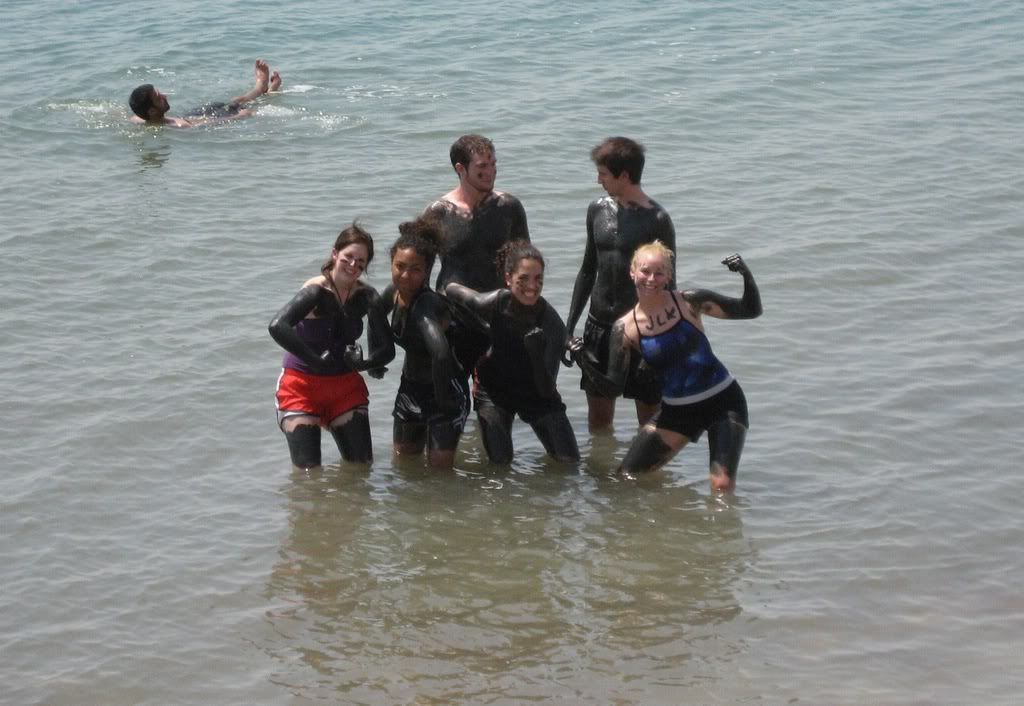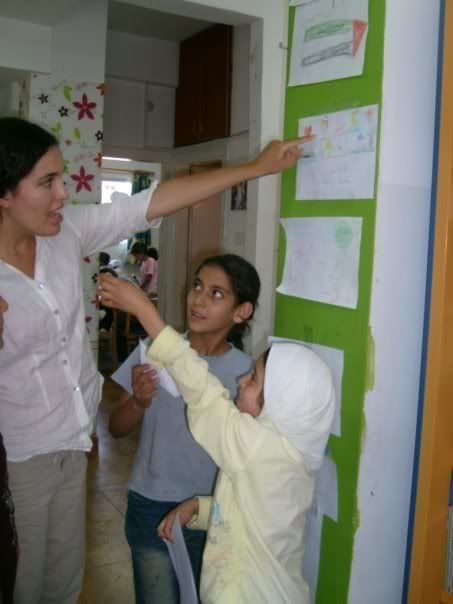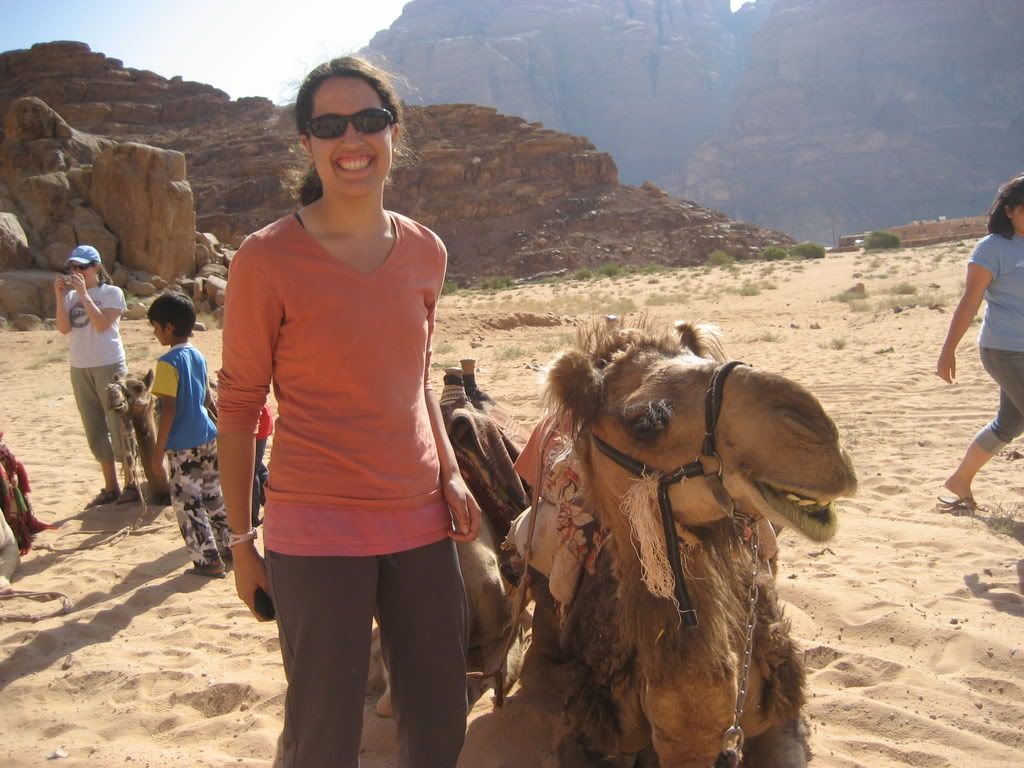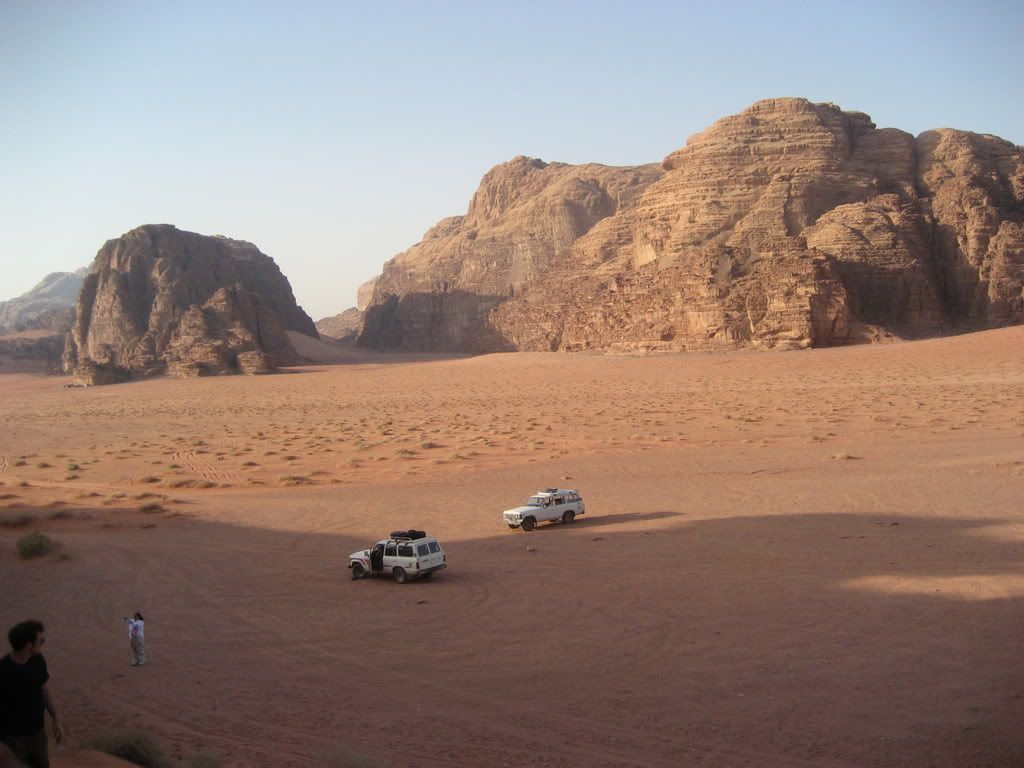
Enjoying the view of the Jordan Valley from Qal'at ar-Rabadh
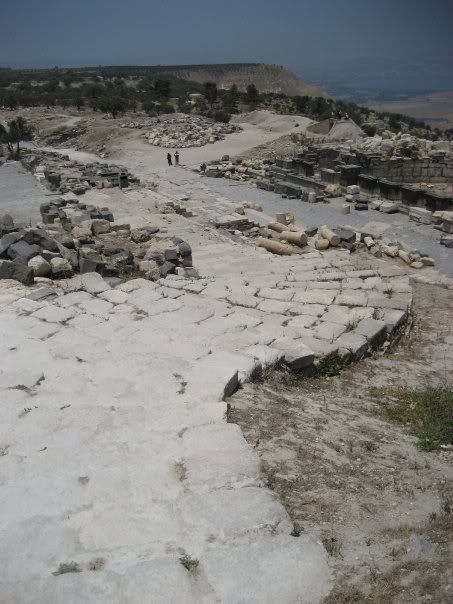
Umm Qais, or Gadara
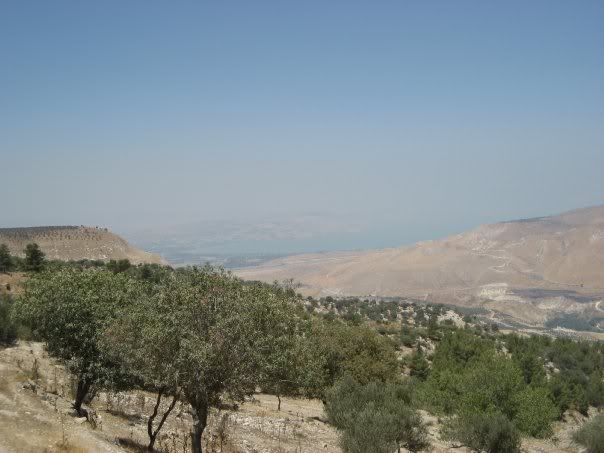
The Sea of Galilee and the Golan Heights
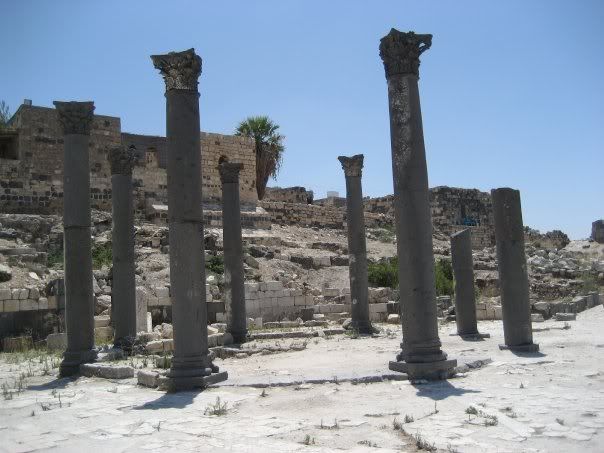
The remains of the church in the Basilica Terrace of Umm Qais
Surprise! I’m behind again! Let’s see, last weekend…I actually took Friday off to do nothing, which was very relaxing. I’ve been waking up for class at 8:00am five days a week and traveling every day of the weekend since I got here, so sleeping in for the first time felt great! Since no one else was around, I gave the apartment a through clean, went to the nearby grocery store and bakery, and got a head start on my reading for my Women and Leadership class.
Saturday, however, was a typical full day trip around Jordan. I took a taxi with Carla, Corey, and Sarah to visit Ajloun, a town near Jerash that is home to an imposing castle built by one of Saladin’s generals, and the Roman village of Umm Qais in the far north of Jordan.
Our taxi driver for this trip, Adel, was one-in-a-million. Some of the girls found him by chance the day before when they were hailing a taxi to take them to the bus station, but he offered to take them to their destinations (Madaba and then the Dead Sea) for a bargain, so they ditched their plan and took him up on the offer. He was such a wonderful driver that we called him up and asked if he would be interested in driving us to North Jordan, another part of the country which is harder to get to via public transportation. He accepted, and was right on time picking us up at the hotel.
Some of you may have heard (bad news travels fast, after all), that the name “Isabella” isn’t considered a beautiful name in the Middle East. Why, you ask? Because it sounds just like “zbaleh,” the Arabic word for “trash,” or “garbage.” I learned this the hard way, when my Arabic professor, thinking one of the girls in my class had said “I want to walk behind the garbage” when she meant to say “I want to walk behind Isabella,” pointed to the overflowing trash can in our classroom and assured her that no one wants to walk behind “zbaleh.” That explains the weird looks I get when I tell many Jordanians my name—sadly, even when I say “IZ-a-BELL-ah,” I still get skeptical looks and I’m asked to say it one more time.
When Adel heard my name, he said he wouldn’t call me Isabella since it’s not a nice name in arabi. He gave me an Arabic name—Marrah, which means “happiness,” apparently, and is also the name of one of his daughters—and addressed me by Marrah for our trip. I’ve never been a fan of “French names” for French class or “Spanish names” for Spanish class, but this name—Marrah—is special. Certainly better then “Zbaleh,” at any rate.
Anyways, moving on…we arrived in Ajloun right as it was starting to warm up. We were able to see Qal’at ar-Rabadah, the castle on the hill, from far away. We were able to bargain with the guards (with the help of Carla’s blonde hair and smile!) to get a rock-bottom student discount ticket. We had a lot of fun exploring the castle, which was complete with a small museum with a collection of old coins and pottery from the area. Qal’at ar-Rabadah was built by one of Saladin’s generals, his nephew Azz-ad-Din Usama, who built the castle/fortress on top of the ruins of a Christian monastery that used to occupy the same place on the hill overlooking the valley. The view from the top of the castle is incredible: North Jordan is comparatively much greener then the rest of the country (not particularly difficult, since Jordan is mostly desert anyways), and the landscape, with Ajloun in the hills below and farmland that stretches out to Syria, fades into a murky blur on the horizon.
We piled back into the taxi to drive to Umm Qais, which is about as far north in Jordan as you can get. We drove through Irbid, another large city in Jordan and home to Yarmouk University, one of the best schools in the country and the Arab world. Yarmouk is also home to one of UNC’s Arabic language-intensive summer program, the other being in Morocco. Though I’ve had my differences with my study abroad, I am glad that I didn’t go to a language institute for the summer—I want to practice my Arabic, of course, but I’m also glad that I’m able to travel on my weekends and not be constantly bogged down with homework.
Umm Qais, or Gardara, was one of the great cities of the Decapolis, which holds religious significance for Christians (Gardara is the place where Jesus cast out the Devil from two demons into a herd of pigs). It also provides a beautiful vantage point for Palestinians living in Jordan to look over to their homeland from afar.
Umm Qais is very startling because the ruins are made of black basalt and white limestone. The West Theatre, for instance, is made entirely of black basalt, where the Basilica Terrace, which contains the remains of a church built on top of a row of shops, is both basalt and limestone, and the main street through the city is mostly the white limestone. There is also an excellent viewing platform from where you can clearly see to the Sea of Galilee and the Golan Heights. I feel like I say this about every place I visit, but the view was just so incredible to take in! We spent about two hours total there, and left just as the larger tour groups began to arrive.
The drive back to Amman didn’t take as long as we expected—we only stopped once, for a juice break. I almost forgot to mention what made Adel an over-the-top taxi driver: in addition to being friendly and accommodating, he stopped not once, not twice, but three times during our trip to buy us food and drinks. Here again is that famous Arab hospitality, but Adel took it to a new level. He didn’t ask for it, but we gave him a big tip for all his kindness, and if we need any more chartered taxis, he’s first on our list of people to call!
Sadly, transportation for this weekend’s travels is still a little up in the air. Tomorrow (Thursday, July 24) we are going to Karak, a town halfway between Amman and Aqaba, as a study abroad group, and from there, I am breaking away with two friends, Maria and Rachel, to spend the weekend in Petra! Getting there might be an adventure itself, but it’ll be worth it to see one of the new wonders of the world. Wish us luck!


